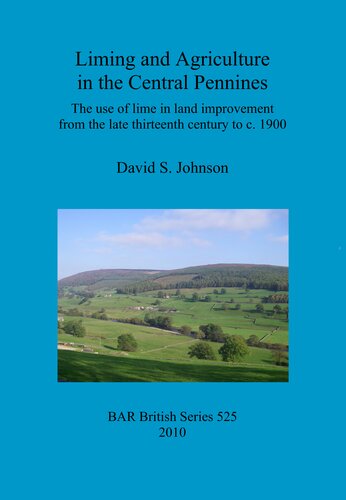

Most ebook files are in PDF format, so you can easily read them using various software such as Foxit Reader or directly on the Google Chrome browser.
Some ebook files are released by publishers in other formats such as .awz, .mobi, .epub, .fb2, etc. You may need to install specific software to read these formats on mobile/PC, such as Calibre.
Please read the tutorial at this link: https://ebookbell.com/faq
We offer FREE conversion to the popular formats you request; however, this may take some time. Therefore, right after payment, please email us, and we will try to provide the service as quickly as possible.
For some exceptional file formats or broken links (if any), please refrain from opening any disputes. Instead, email us first, and we will try to assist within a maximum of 6 hours.
EbookBell Team

5.0
18 reviewsThis book focuses on the historic use of lime as a soil additive, and sets liming in the context of agricultural land improvement alongside draining, paring, marling and the use of other soil conditioners. It is concerned with the Central Pennines, centred on the Yorkshire Dales National Park (N England), and adjacent lowlands. Previous work has tended to concentrate on kilns as industrial monuments or on archaeological investigations of lime burning and quarrying sites. No other detailed regional study of the history of agricultural liming has been identified in the literature. The book examines the time frame during which liming is known to have been practised, and investigates whether or not widespread liming was largely a phenomenon of the era of parliamentary enclosure; it looks into the spatial extent within which land was limed, whether dominantly moorlands and upland wastes or lowlands as well; and investigates the possibility that liming was not just undertaken where limestone bedrock occurs but also more widely; and considers the possibility that the benefits of liming may have been appreciated at all levels of the farming hierarchy rather than just by landowners and their stewards and agents. An empirical, evidence-based approach was adopted with data having been obtained by both field- and deskbased methods. Archaeological excavation was employed, alongside the field surveying techniques of landscape archaeology, to identify the spatial distribution of liming and to isolate examples of late medieval or early modern lime burning. Extensive archival research concentrated on estate, manorial and farm records and on contemporary written sources.